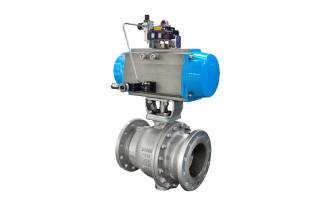Mar. 17, 2020
A valve is a device used to control the direction, pressure, and flow of a fluid in a fluid system. It is a device that allows the medium (liquid, gas, powder) in the piping and equipment to flow or stop and can control its flow. During the construction process, the installation method of the valve will directly affect the normal operation in the future. The O type ball valve supplier will summarize some precautions when installing the valve.
Taboo 1: The main materials, equipment and products used in construction lack technical quality appraisal documents or product certifications that meet the current standards issued by the country or the ministry.
Consequences: The quality of the project is unqualified, there is a hidden danger of accidents, it cannot be delivered and used on schedule, and it must be reworked for repairs; causing delays in the construction period and increased labor and material inputs.
Measures: The main materials, equipment and products used in water supply, drainage and sanitary engineering shall have technical quality appraisal documents or product certifications that meet the current standards issued by the country or the ministry; their product names, models, specifications, and national quality standards shall be indicated. Code, date of manufacture, name and location of the manufacturer, inspection certificate or code of the manufactured product.
Taboo 2: Do not perform necessary quality inspection according to regulations before valve installation.
Consequences: The valve switch is not flexible, the closure is not strict, and water leakage (steam) occurs during the system operation, which causes rework and repair, and even affects the normal water supply (steam).
Measures: Before installation of O type ball valve, pressure strength and tightness test should be done. The test shall be carried out by random inspection of 10% and not less than one in each batch (same brand, same specification, same model). For closed-circuit valves installed on the main pipe to cut off, the strength and tightness tests should be performed one by one. Valve strength and tightness test pressure should meet the requirements.

O Type Ball Valve
Taboo 3: The specifications and models of the installed valves do not meet the design requirements. For example, the nominal pressure of the valve is less than the system test pressure; when the pipe diameter is less than or equal to 50mm, the gate valve is used; the hot and dry heating and dry pipes use stop valves;
Consequences: Affects the normal opening and closing of the valve and adjusts resistance, pressure and other functions. It even caused valve damage during system operation and forced repair.
Measures: Familiar with the application scope of various valves, and choose the specifications and models of the valves according to the design requirements. The nominal pressure of the valve should meet the requirements of the system test pressure. According to the requirements of the construction code: a stop valve should be used for the pipe diameter of the water supply branch pipe less than or equal to 50mm; a gate valve should be used when the pipe diameter is greater than 50mm. Gate valves for hot water heating, dry, and vertical control valves should be used, and butterfly valves should not be used for fire pump suction pipes.
Taboo 4: The valve installation method is wrong. For example, the globe valve or check valve has the opposite direction to the water (steam) direction. The valve stem is installed downwards. The horizontally installed check valve is installed vertically. The valve stem does not face the inspection door.
Consequences: The valve fails, the switch is difficult to repair and repair, and the valve stem often causes water leakage.
Measures: Install strictly in accordance with the valve installation instructions. The open-rod gate valve leaves the valve stem with an extended opening height. The butterfly valve fully considers the turning space of the handle. The various valve stems must not be lower than the horizontal position, and not downward. The concealed valve should not only be provided with an inspection door that meets the needs of valve opening and closing, but also the valve stem should face the inspection door.
Taboo 5: Common valve flanges for butterfly valve flanges.
Consequences: The size of the butterfly valve flange is different from that of the ordinary valve flange. Some flanges have a small internal diameter, and the butterfly valve has a large disc, which can cause the valve to fail to open or hard to open, causing damage to the valve.
Measures: The flange should be processed according to the actual size of the butterfly valve flange.
Headquarter Add.: SUPCON Park, No.309 Liuhe Road, Binjiang District, Hangzhou, 310053, China.
Tel.: +86 571 8111 9774
Fax: +86 571 8111 9737
E-mail: [email protected]
